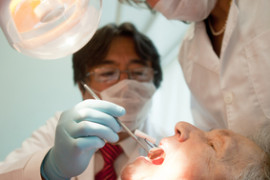A common oral pathogen is found substantially more frequently in patients with non-alcoholic fatty liver disease, according to recent research published in the journal BMC Gastroenterology. And it appears that periodontal therapy may have a significant impact on improving liver function.
Non-alcoholic fatty liver disease (NAFLD) is a condition in which the liver does not adequately break down fats, which then build up in the liver tissue. While the exact cause of the condition is unknown, NAFLD often accompanies obesity, hyperlipidemia, and diabetes.
For the study, researchers looked for the oral pathogen P. gingivalis in the saliva of three groups of people: one group with non-alcoholic fatty liver disease, one group with non-alcoholic steatohepatitis (a more severe form of NAFLD), and a control group.
Not only was P. gingivalis found more frequently in subjects with NAFLD, but it was even higher in those with the more severe form of the disease.
“The result revealed a statistically significantly higher prevalence of P. gingivalis infection in NAFLD patients as compared with that in the control subjects, even after adjusting for age, history of DM and BMI. This result suggests that the presence of P. gingivalis infection might be an independent predictor of the development of NAFLD.”
As an adjunct to this study, researchers also examined a subsect of NAFLD patients to see whether periodontal treatment had an effect on liver function. They found that after 3 months of non-surgical periodontal therapy, individuals with NAFLD had significantly improved serum levels of AST and ALT—enzymes used to detect tissue damage and disease in the liver.
They concluded that not only is P. gingivalis infection a risk factor for the progression of non-alcoholic fatty liver disease to the more severe non-alcoholic steatohepatitis—it may contribute significantly to the pathogenesis of the disease to begin with.
Research once again points to a substantial role of periodontal therapy in the prevention and management of a potentially deadly disease. P. gingivalis is one of the most common and virulent pathogens involved with periodontal disease, but its presence is not limited to those with bleeding gums and deep pockets. This study, along with many others, demonstrates the importance of monitoring the oral microbiome for the prevention as well as treatment of oral and systemic disease.



